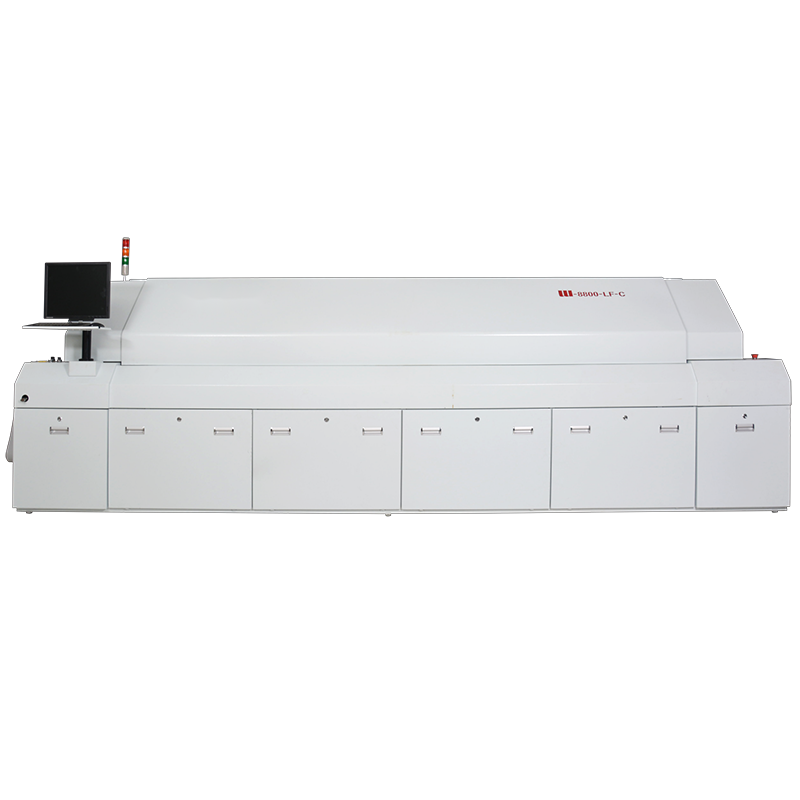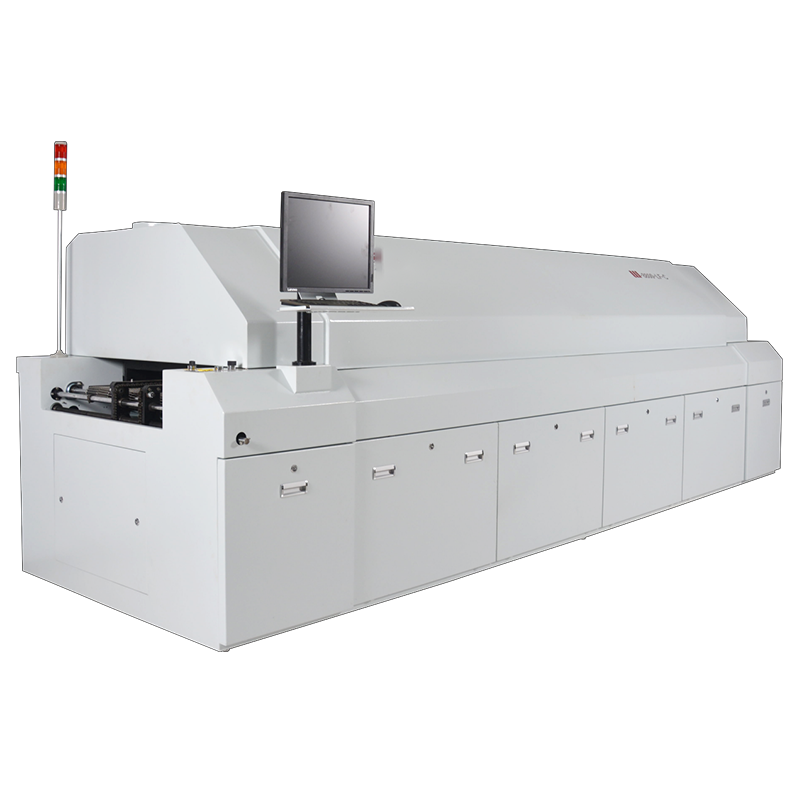Email format error
Email cannot be empty
Email already exists
6-20 characters(letters plus numbers only)
The password is inconsistent
Email format error
Email cannot be empty
Email does not exist
6-20 characters(letters plus numbers only)
The password is inconsistent


SMT Reflow Oven for Soldering: A Comprehensive Guide
In the world of electronics manufacturing, the SMT reflow oven for soldering plays a crucial role. Surface Mount Technology (SMT) has revolutionized the way electronic components are mounted onto printed circuit boards (PCBs), and the reflow oven is an essential part of this process. This blog will explore everything you need to know about SMT reflow ovens, from their functionality and types to the intricacies of the reflow soldering process. Additionally, we will touch upon the significance of choosing the right reflow oven, including considerations such as the offerings from China SMT reflow oven manufacturers.
Understanding the SMT Reflow Oven for Soldering
What is a SMT Reflow Oven?
A SMT reflow oven is a specialized piece of equipment used in the process of soldering surface-mounted components onto PCBs. The oven heats the PCB to melt the solder paste applied to the component pads, thereby creating electrical connections between the components and the board.
Key Components of a SMT Reflow Oven for Soldering
1. Conveyor System: Transports PCBs through different heating zones.
2. Heating Zones: Includes preheat, soak, reflow, and cooling zones.
3. Temperature Control System: Ensures precise temperature regulation.
4. Cooling System: Rapidly cools the solder to form strong joints.
The Reflow Soldering Process
Step-by-Step Guide
1. Stencil Printing: Solder paste is applied to the PCB using a stencil.
2. Component Placement: SMT components are placed onto the solder paste.
3. Reflow Soldering: The PCB is passed through the reflow oven to melt the solder and create joints.
4. Inspection: The solder joints are inspected for quality assurance.
Temperature Profiles
The reflow process is governed by a temperature profile, which is a carefully controlled sequence of temperatures that the PCB goes through in the oven. A typical temperature profile includes:
- Preheat Zone: Gradually heats the PCB to avoid thermal shock.
- Soak Zone: Maintains a steady temperature to activate flux and remove volatiles.
- Reflow Zone: Reaches peak temperature to melt the solder.
- Cooling Zone: Rapid cooling to solidify the solder joints.
Types of SMT Reflow Ovens
Infrared (IR) Reflow Ovens
IR reflow ovens use infrared radiation to heat the PCBs. They are known for their simplicity and cost-effectiveness but can have issues with uneven heating.
Convection Reflow Ovens
These ovens use heated air to transfer heat to the PCB. They provide more uniform heating and are the most commonly used type in the industry.
Vapor Phase Reflow Ovens
In vapor phase reflow ovens, the PCB is immersed in a vaporized inert liquid. This type offers precise temperature control and is effective for complex boards but is more expensive.
Hybrid Reflow Ovens
Hybrid ovens combine IR and convection heating methods to leverage the benefits of both systems, ensuring even heating and efficiency.
Advantages of Using a SMT Reflow Oven for Soldering
Precision and Reliability
Reflow ovens provide precise temperature control, ensuring reliable solder joints and reducing the risk of component damage.
Efficiency
These ovens can handle large volumes of PCBs, making them ideal for high-volume production environments.
Versatility
SMT reflow ovens can accommodate various PCB sizes and complexities, offering flexibility in manufacturing.
Choosing the Right SMT Reflow Oven for Soldering
Production Volume
The volume of production is a critical factor. High-volume manufacturers might need larger, more advanced ovens, while small-scale producers can opt for compact, cost-effective models.
PCB Complexity
The complexity of the PCB design, including the number of layers and the types of components used, will influence the choice of reflow oven.
Budget Considerations
Budget is always a consideration. While it might be tempting to go for cheaper options, it’s essential to balance cost with the required features and long-term reliability.
Technological Features
Modern reflow ovens come with various technological advancements like real-time monitoring, advanced temperature profiling, and automated controls that enhance production efficiency and quality.
The Role of China SMT Reflow Ovens in the Market
Cost-Effectiveness
The SMT reflow oven manufacturers are known for producing cost-effective solutions without compromising on quality. This makes them a popular choice for manufacturers worldwide.
Innovation and Technology
Chinese manufacturers are continually advancing their technology, offering reflow ovens with modern features such as enhanced thermal profiling, energy efficiency, and compact designs.
Global Reach
The global reach of the SMT reflow oven manufacturers from China ensures that they can provide equipment to manufacturers in different parts of the world, often with shorter lead times and better pricing.
Common Issues and Troubleshooting in Reflow Soldering
Tombstoning
This occurs when one end of a component lifts off the PCB, resembling a tombstone. It is usually due to uneven solder melting. Adjusting the temperature profile can mitigate this issue.
Solder Balls
These are small balls of solder scattered around the PCB, typically caused by excessive solder paste or improper reflow profiles. Reducing the amount of solder paste and optimizing the temperature profile can help.
Insufficient Wetting
Insufficient wetting occurs when the solder does not properly adhere to the component leads or pads. This can be due to contamination or inadequate heating. Ensuring proper cleaning and adjusting the reflow profile can resolve this.
Bridging
Solder bridging happens when solder forms an unwanted connection between adjacent pads or component leads. This can be caused by excessive solder paste or poor component placement. Careful stencil design and precise component placement are key to avoiding this issue.
Future Trends in SMT Reflow Ovens
Energy Efficiency
As the world becomes more environmentally conscious, energy-efficient reflow ovens are gaining popularity. These ovens use advanced insulation and heat recovery systems to reduce energy consumption.
Miniaturization
With the ongoing trend towards smaller and more compact electronic devices, reflow ovens are being designed to handle increasingly smaller components with precision.
Smart Manufacturing
Integration with Industry 4.0 technologies is another significant trend. Modern reflow ovens are being equipped with IoT sensors and AI capabilities for real-time monitoring, predictive maintenance, and enhanced automation.
Conclusion
The SMT reflow oven for soldering is an indispensable tool in modern electronics manufacturing. Understanding its components, types, and the reflow soldering process is crucial for optimizing production efficiency and quality. As the industry evolves, manufacturers must stay updated with the latest trends and technological advancements to remain competitive. Whether opting for cost-effective solutions from China SMT reflow oven manufacturers or investing in high-end models with advanced features, choosing the right reflow oven can significantly impact the success of your manufacturing operations.

